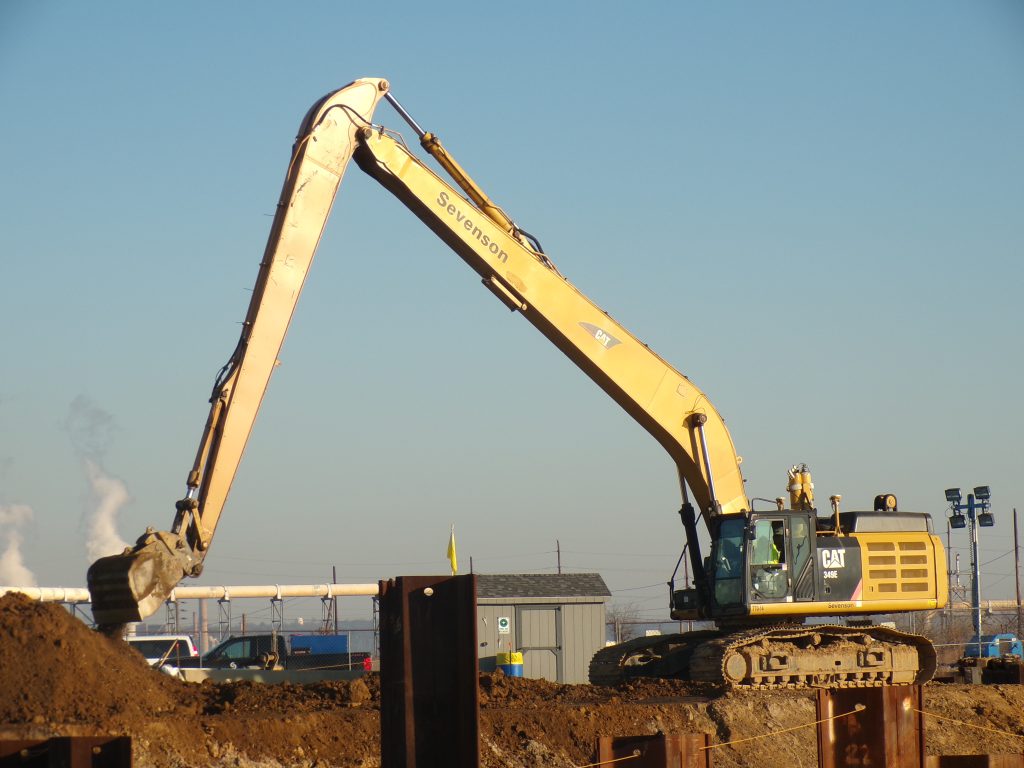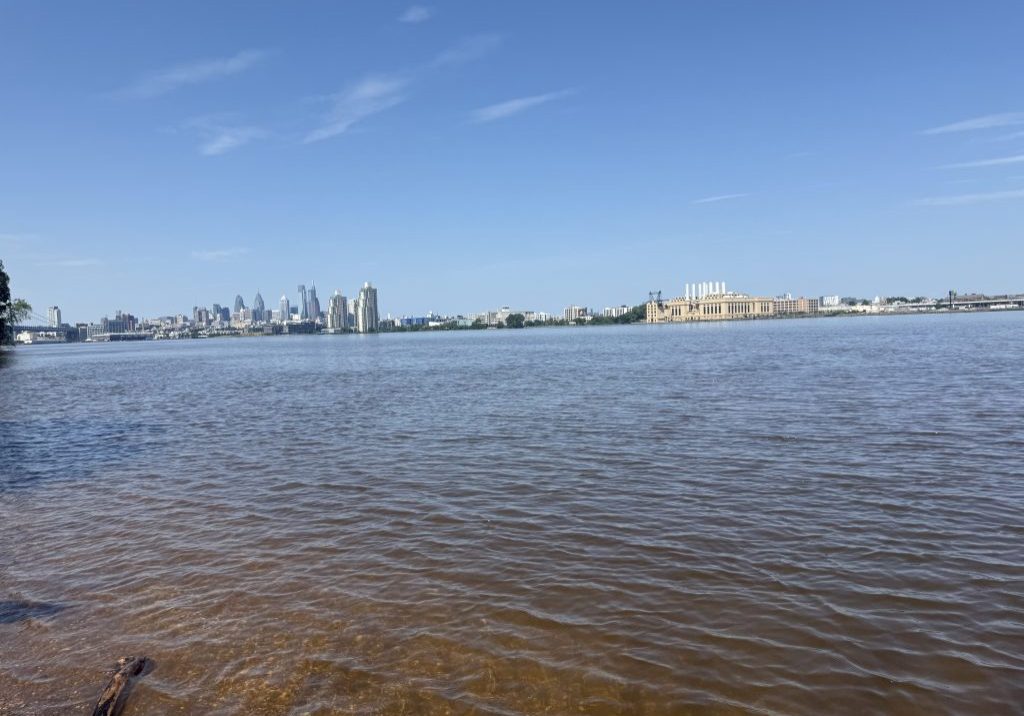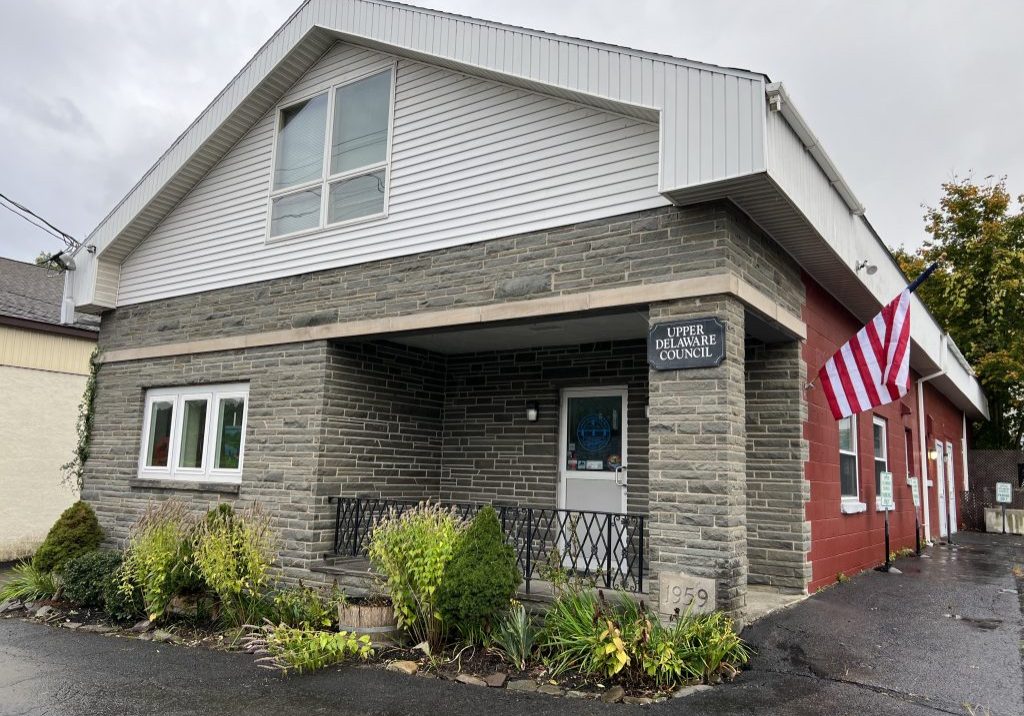
Clean-up of Manhattan Project-era radioactive waste at DuPont site along Delaware River continues in N.J.
| August 26, 2025
Following the discovery of more contaminated soil last year, the cleanup of Manhattan Project-era radiological waste at the former DuPont Chambers Works in Deepwater, N.J., will continue until 2038, the U.S. Army Corps of Engineers said at a recent public presentation in nearby Salem County.
Since the corps began excavation work in 2014, it has removed 92,660 cubic yards — about 3,250 garbage trucks’ worth — of material, much of it contaminated with uranium, the key component in the development of an atomic bomb, the Manhattan Project’s core mission.
Corps representatives said that some 53,900 more cubic yards of earth are slated to be removed by 2032, followed by up to five years of groundwater monitoring.
Secret research along the lower Delaware
Between 1942 and 1947, scientists worked in secret to develop and produce uranium materials at the site, now owned by the Chemours Company, which sprawls for 600 acres along the banks of the lower Delaware River, beneath the shadow of the Delaware Memorial Bridge.
There were a few specific buildings where Manhattan Project operations occurred. When those activities ceased in 1949, the Department of Energy conducted radiological surveys and decontamination of the structures, deeming them safe to be handed back to DuPont Chambers Works to use the structures.
However, the decontamination practices of the time were not sufficient. Beginning in 1956, said Dan Sirkis, a remediation expert and the project’s technical manager, the buildings were knocked down and their footprints filled in.
To locate these areas, Sirkis scrutinized the corps’ vast library of aerial imagery taken over the course of three decades. “I’d look and say, ‘Okay, what got filled in after 1956? Maybe that’s our stuff (Manhattan Project uranium materials).’”
It was research like this that led Sirkis to previously unknown areas of uranium contamination on the site — in what the corps call Area of Concern 4, or AOC 4. The location contains a large lagoon that, historically, drained into the Delaware River.
Clean-up at 40 sites
The clean-up effort falls under the Formerly Utilized Sites Remedial Action Program, or FUSRAP, which focuses solely on cleaning up sites across the country that were used for the Manhattan Project.
In 1997, FUSRAP was transferred from the Energy Department to the Army Corps. Since 2014, the agency has been excavating areas that Sirkis and his colleagues identify, a meticulous, multi-faceted process that includes digging out layers of earth and physically separating, as best as possible, uranium materials from other forms of contamination.
During the excavation process, the material is often covered with special foams — Sirkis described one as having the consistency of shaving cream — to prevent it from becoming airborne.
According to corps engineer and project manager Lindsay Keller, 32 sites have been through the program; 21 of those are still active and 16 are still being actively remediated. Most of the FUSRAP sites are concentrated in the Northeast, with four alone located in New Jersey, but they do reach as far west as Missouri and Iowa.
Keller said that the focus at DuPont Chambers Works, which is now owned by the Chemours Company, is uranium, but that the contamination varies across the FUSRAP portfolio.
The material, which contains both uranium and other chemical pollutants,
is then loaded onto rail cars bound for disposal facilities equipped to handle such a hazardous substance.
Those facilities, owned by Republic Services, are in Wayne, Mich., and Robstown, Texas. The Robstown facility, Sirkis said, is specifically equipped with an incinerator that thermally treats the non-radiological chemicals in the materials excavated from the site.
Groundwater contamination concerns
The presentation in Salem County was one of several that the corps has given, and will give on a bi-annual basis to communities around Salem County, which have long dealt with tainted groundwater and health concerns from DuPont Chambers Works and other industrial facilities in the region.
Last year, for example, Solvay Specialty Polymers, in nearby West Deptford, reached a $393 million settlement with New Jersey for polluting groundwater in Salem and Gloucester Counties with the forever chemicals, PFAS and PFOA.
And, in a historic settlement announced on Aug. 4, the State of New Jersey secured a total of $2 billion from DuPont, Chemours and the agricultural chemicals manufacturer Corteva to clean up PFAS contamination at Chambers Works and other sites in South Jersey.
Almost all of the questions and comments from the public at the presentation concerned groundwater contamination from the site. Keller, the corps project manager, confirmed that uranium has been found in groundwater on-site, but said that it “is not migrating offsite.”
“We have no evidence that it is anywhere but localized to our project area,” Keller said.
Sirkis added that, unlike more common groundwater contaminates, like benzene, uranium tends to remain in the areas where it was deposited.
“Uranium really doesn’t want to move at all,” he said. “It doesn’t sink. It doesn’t take off.”
Of the 125 test wells on-site, Sirkis said, only two have contained uranium. Though other contaminants found along with uranium material are disposed of, FUSRAP does not actively look for any other pollutants but uranium.
The corps may regularly test groundwater within DuPont Chambers Works but Keller said that the agency does not do any monitoring beyond it because such activities fall outside of the narrow FUSRAP mandate.
Over the years, New Jersey Department of Environmental Protection groundwater tests around DuPont Chambers Works have identified dozens of toxic chemicals that exceed levels that are considered safe for consumption.
One resident outlined the deep suspicions within the local community about transparency, both from the various companies responsible for polluting Salem County’s land and water — and the governments charged with cleaning it up.
“You should be suspicious of us,” Sirkis said. “You should judge us, though, on what we’re accomplishing.”
“Believe me,” the resident said. “I am.”








I WORKED THERE 36 PLUS YEARS. THEY ONCE DISTRIBUTED CHECKS TO LOCAL RESIDENTS, THAT WERE IN A RADIUS OF THEIR CONTAMINATION FINDINGS. THESE CHECKS WENT TO THESE PEOPLE AND WERE UNDER $300.00 TO INSURE NO FUTURE LAWSUITS. TAKE THE MONEY AND YOUR DONE. HOW FUCKED UP WAS THAT? ANOTHER BIG PROFIT CENTERED COMPANY THAT KILLED PEOPLE. PFOA FROM TEFLON, WHICH MADE BILLIONS OF DOLLARS FOR DuPONT DOES NOT GO AWAY. COUGHING ALL DAY AND NIGHT FOR LAST NINE YEARS. SOLD GUN POWDER TO BOTH SIDES OF A WAR. ANY QUESTIONS ABOUT THEM BEING ABOUT ANYTHING BUT MONEY? THEY SHOULD AT LEAST TAKE CARE OF SURVIVORS, WHO KNEW NOTHING OF THEIR COVER-UPS, BUT WENT TO WORK DILIGENTLY. I THINK WE ARE ALL SHAREHOLDERS, AND SHOULD BE COMPENSATED BEFORE WE DIE. TO MANY LAWYERS HAVE HELPED THEM COVER UP. HOW MUCH WERE THEY PAID?
HERBERT S. RENNIE
18 CHATHAM RD, GIBBSBORO N.J.
08026
I worked there too in 1974 but I got laid off in 10 months due to the recession. It was my first job after High School graduation.